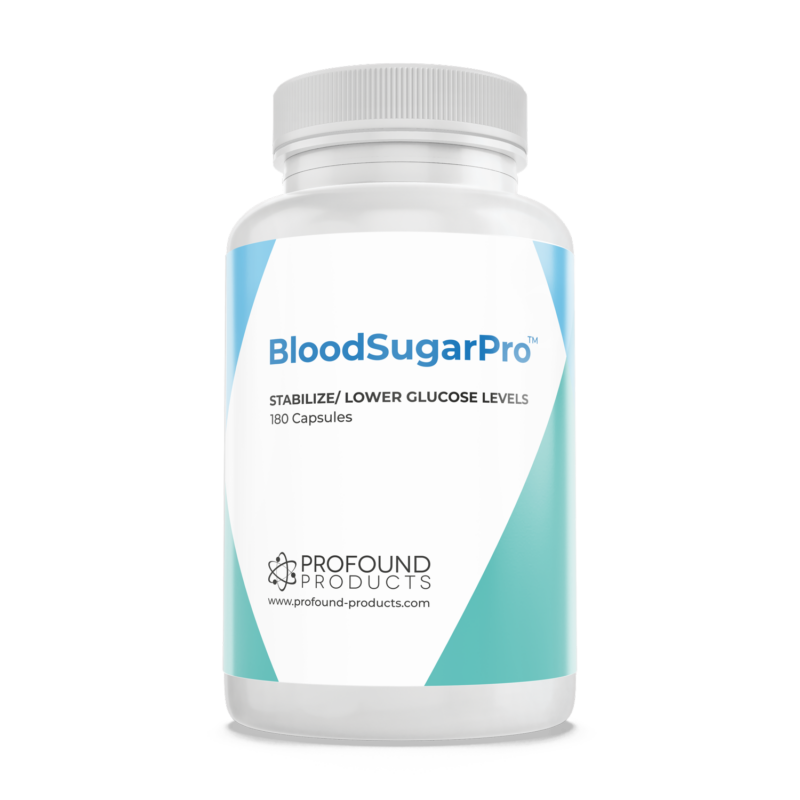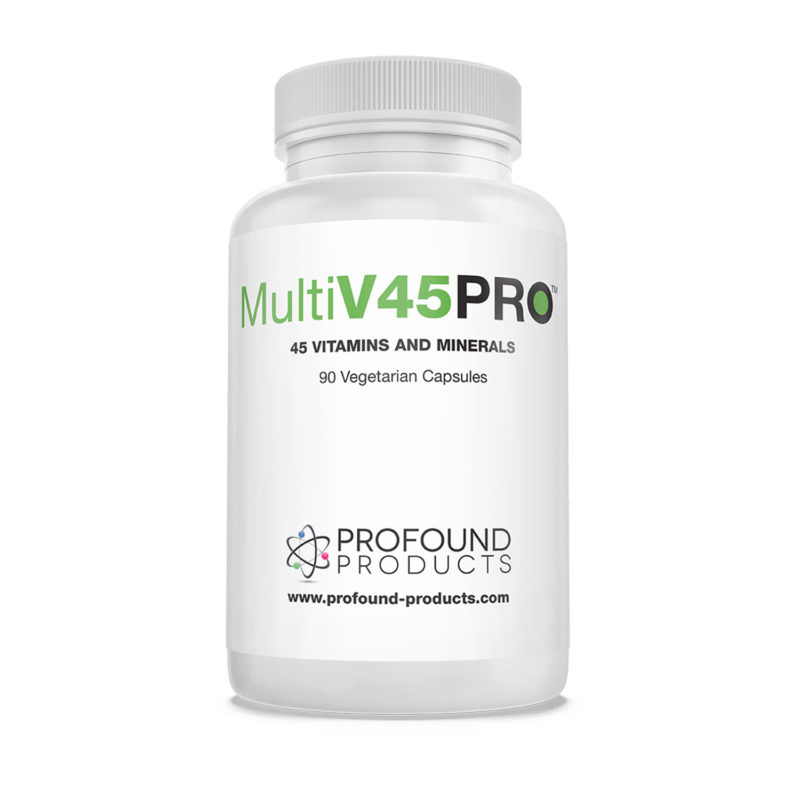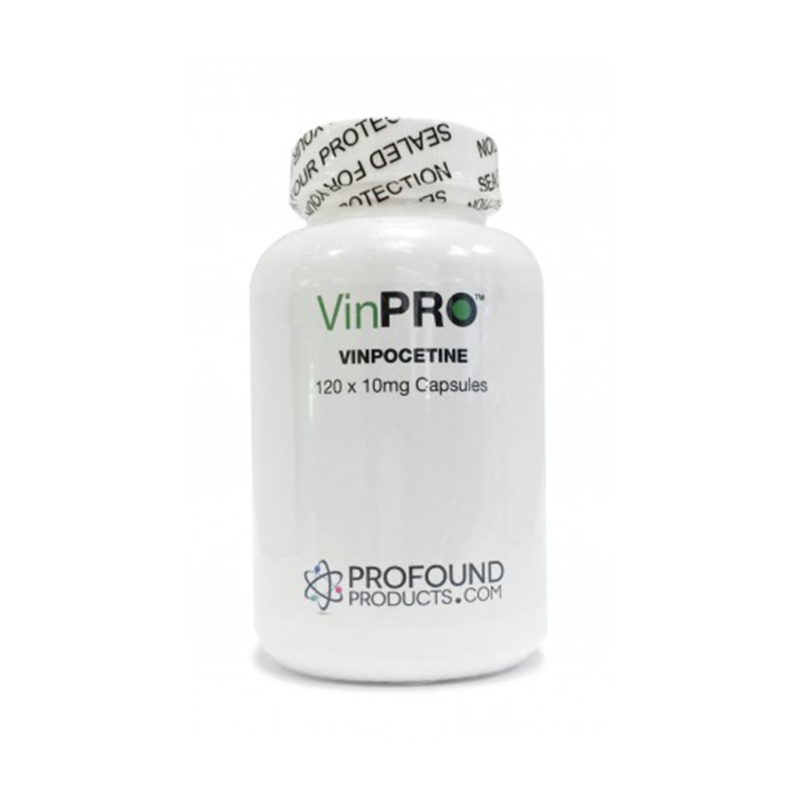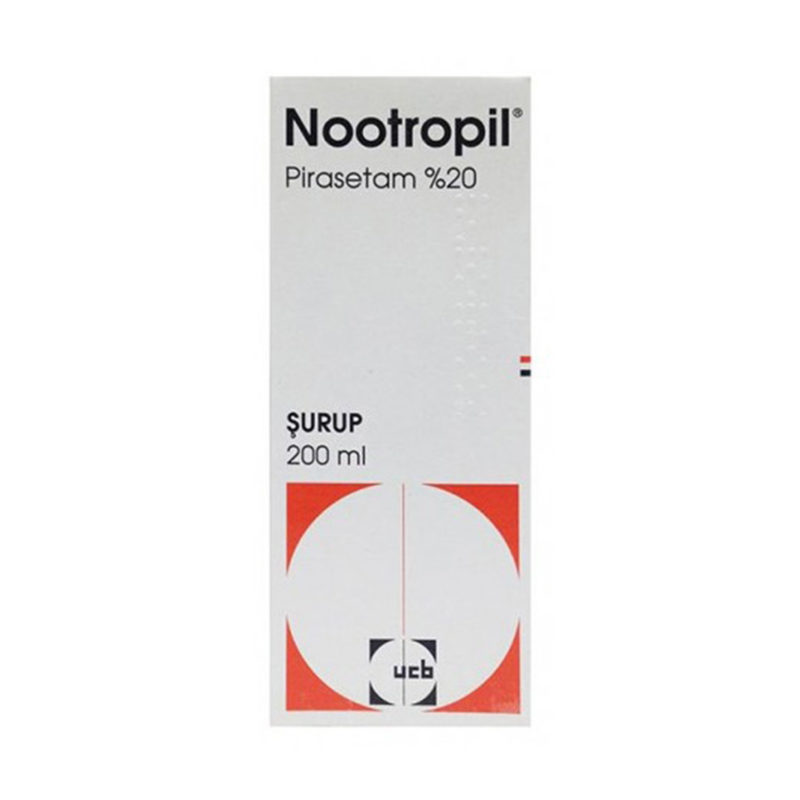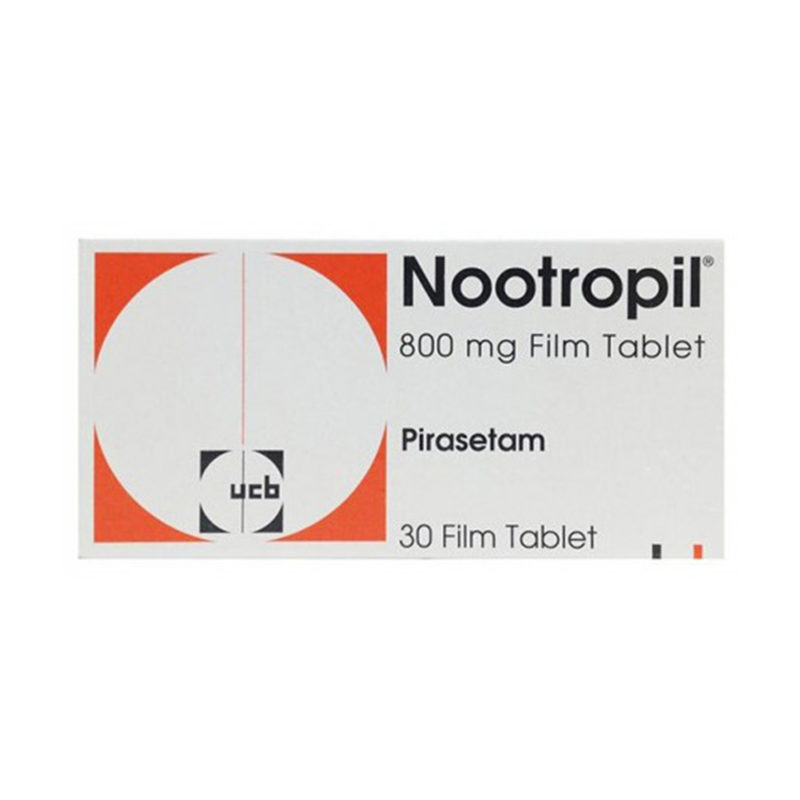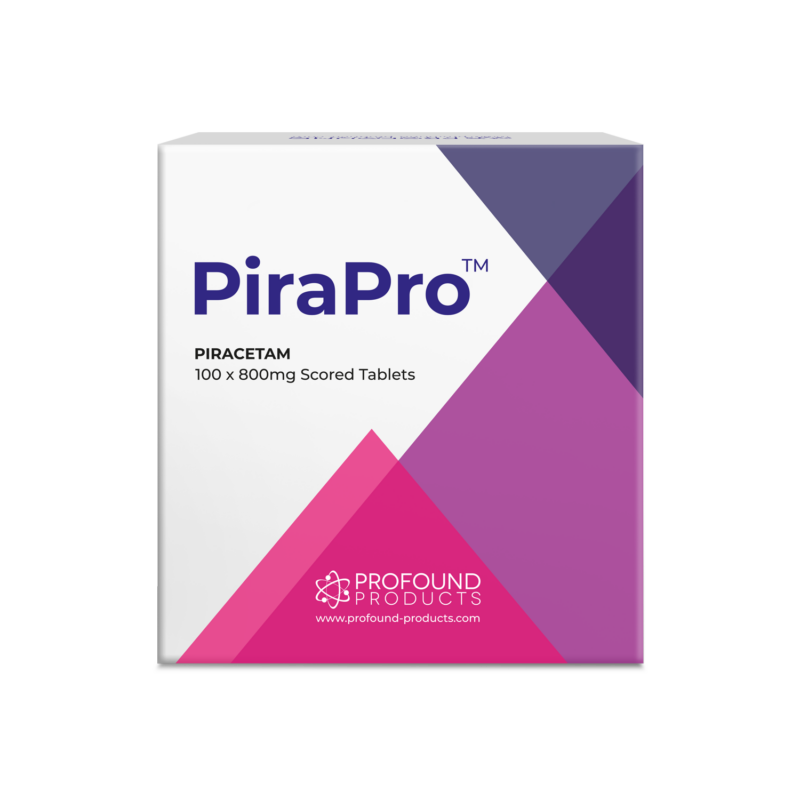Beating Attention Deficit Disorder
“Concentration” denotes the ability to sustain focused attention on a given object, external (such as people or rocks or colors), or internal (such as thoughts, feelings or sensations). The power of concentration also involves the ability to screen out irrelevant distractions that might divert or disrupt sustained, focused attention. Although animals can concentrate to some extent (e.g. a lion focusing on the animal chosen for its dinner), concentration as a volitional power reaches its zenith only in humans. Only humans can concentrate on things that do not yet exist (such as a building that exists only in the mind of its architect), or on such abstract notions as “infinity,” “justice”, or “eternity.”
Yet concentration for humans is a very practical, mundane necessity of life. Psychiatrist Daniel Amen reports that adults who come to his clinic suffering from ADD (attention deficit disorder), a serious disorder of concentration, typically are concerned with poor school or work performance caused by such concentration-related symptoms as difficulty sustaining attention to reading or paperwork; tendency to being easily bored by tedious material; poor planning and organization; chronic procrastination; restlessness and non-phobic difficulty staying in confined spaces; difficulty listening carefully to directions; frequent lateness for work or appointments; and tendency to misplace things. They also frequently complain of difficulty thinking clearly; poor self-discipline, mood problems, anxiety, restlessness, drug abuse, temper problems, marital problems, insomnia, over impulsiveness, and money problems. And all of these problems in turn relate to their difficulty with sustaining attention and resisting distractions. (1)
ADD and ADHD
Amen notes that ADD has been present in some form in all four of the editions of the Diagnostic and Statistical Manual of the American Psychiatric Association, although the condition’s name has changed in each edition. ADD is therefore not just some recent “fad” diagnosis. It is currently labelled “Attention Deficit /Hyperactivity Disorder” (ADHD), although many children and adults lack the hyperactivity component of the attention deficit syndrome. (2)
There is a core group of symptoms common to those who have ADD. These include difficulty focusing attention; difficulty organizing tasks, space and time; difficulty following tasks through to completion; easy distractibility; poor self-supervision; forgetfulness; and poor attention to detail and careless mistakes. (3,4)
Psychiatrist Amen diagnoses AD(H)D based in part on careful symptom questionnaires, as well as medical and family history. However, his clinic specializes in using a neuro-imaging technology called SPECT to more definitively establish the diagnosis. “SPECT” is Single Photon Emission Computed Tomography. It involves injecting a mildly radioactive substance into the patient’s bloodstream which is easily taken up by brain cells. Then, either at rest or during a concentration session, a special gamma ray camera photographs the brain from multiple angles over a 15 minute period. A supercomputer then reconstructs 3-dimensional images of brain blood flow levels. (5) Clarke and Sokoloff report that neuro-imaging studies “… establish that local energy metabolism in the brain is coupled to social functional activity and confirm the local cerebral blood flow is adjusted to metabolic demand in local tissue.” (6) Through the SPECT maps, physicians have been able to identify certain patterns of brain activity that correlate with psychological and neurological illnesses. (7) Amen is probably the current leading expert on SPECT imaging, having conducted about 10,000 patient SPECT studies. (8)
ADD: The 6 Types
Through his extensive clinical research conducted over the past dozen years, involving 10,000 SPECT studies and 15,000 patient evaluations, Amen has been able to subdivide ADD into 6 subtypes. (8A) Type 1, or “classic” ADD, involves a normal resting brain, but during concentration there are decreases in metabolic activity in the underside (orbito-frontal) and topside (dorsolateral) prefronal cortex. (9) It should be noted that the “lion’s share” of brain metabolic activity – about 40%-goes to operating the membrane sodium-potassium pumps that make the brain electrical activity possible. (10) Thus, reduced brain metabolic activity necessarily equals reduced brain electrical activity. And since brain electrical activity drives neurotransmitter release (11), reduced brain metabolic activity also equals reduced brain neurotransmitter activity. Amen has defined the primary symptoms of “classic” ADD (really ADHD) as inattentiveness, distractibility, disorganization, hyperactivity, restlessness and impulsiveness. (12)
Type 2, or inattentive ADD, involves a normal resting brain, with reduced metabolic activity in the dorsolateral prefrontal cortex during concentration. Primary symptoms include inattentiveness, sluggishness, slow-moving, low-motivation, frequent boredom, with sufferers frequently described as spacecadets, daydreamers, or couch potatoes. (13)
Amen’s Type 3 is called “overfocused ADD.” SPECT findings show increased metabolic activity at rest and during concentration in the anterior cingulate gyrus, (a brain region connecting the prefrontal cortex and limbic system). During concentration there is also reduced metabolic activity in the orbitofrontal and dorsolateral prefrontal cortex. Over-focused ADD people have trouble shifting attention and frequently get stuck in negative thought or behavior patterns. They are also obsessive and worry excessively. They tend to be inflexible and are frequently argumentative and oppositional. (14)
Type 4 is temporal lobe ADD. At rest and during concentration there is decreased (occasionally increased) temporal lobe activity. During concentration there is typically reduced activity in the orbitofrontal and dorsolateral prefrontal cortex. Temporal lobe ADD symptoms include inattentiveness, impulsiveness, learning difficulties, unstable moods, irritability, dark thoughts, and aggressiveness. (15)
Type 5 is limbic ADD. SPECT findings include increased deep limbic activity (thalamus and hypothalamus) both at rest and during concentration, and decreased activity in orbitofrontal and dorsolateral prefrontal cortex. Symptoms include inattentiveness, low-grade depression, low energy, feelings of hopelessness, chronic negativity, and perceiving situations in the worst possible light. (16)
Amen’s Type 6 is called “ring of fire” ADD. SPECT findings include, both at rest and during concentration, patchy increased activity across the cerebral cortex, with focal areas of increased activity, especially in the parietal lobes, temporal lobes, and prefrontal cortex. Symptoms are inattentiveness with extreme distractibility, anger/irritability, moodiness, verbosity, and extremely oppositional. (17)
Amen’s book contains a 71 question questionnaire to help the reader decide if he might possibly suffer from one of the 6 ADD types. He also provides many case histories of each ADD type, with before and after treatment SPECT photographs, that are very helpful in seeing the psychological/behavioral and neurological differences among the types.
Amen’s treatment regimen is extremely broad, involving biological, psychological and social interventions. (18) His biological treatments focus on eliminating toxins, including caffeine and nicotine because they decrease brain blood flow; avoiding activities with high risk of head injury; dietary changes – a high protein, low sugar diet for all except over-focused ADD; intense aerobic exercise; avoiding prolonged exposure to video and computer games; medication – including Ritalin ® or amphetamines; and nutritional supplements, including a complete multivitamin/mineral supplement, as well as St. John’s Wort, 5-HTP, DL-phenylanine, tyrosine, GABA, and fish oils, with the specific supplements varying depending on the type. The interested reader is referred to Dr. Amen’s book for more detail. (1)
To Ritalin ® Or Not To Ritalin ®?
Perhaps the most controversial, (at least to orthomolecular nutritionists, naturopaths, and “holistic’ physicians) part of Dr. Amen’s treatment regimen is his frequent use of Ritalin ® (methyl-phenidate-MPH) and amphetamines (AMP). Actually, among “mainstream” practitioners of ADD medicine, MPH and AMP are not controversial – they are routinely used to treat presumed AD(H)D cases. Yet a growing movement, led by Dr. Peter Breggin, challenges the need, safety and efficacy of MPH/AMP use in children or adults. (19) Breggin points out that the effects of MPH and AMP are almost identical, and that neither are safe. (20) Breggin quotes a 1995 DEA report that “The potential adverse effects of methylphenidate and d-amphetamine are almost identical.” (21) These potential side effects include heart palpitations, increased heart rate, increased blood pressure, excessive CNS stimulation (including convulsions), toxic or organic psychosis, depression, dizziness, headache, insomnia, nervousness, irritability, tic syndromes, appetite loss, nausea, vomiting, stomach pain, weight loss, growth suppression, blurred vision, low white blood cell count, anemia and hypersensitivity reactions. (22) Breggin also provides evidence that MPH/AMP may cause gross brain malfunction/brain damage, especially in children, whose brains and synaptic connections are still developing. (23) Breggin also cites extensive evidence that MPH/AMP may promote what he calls “the zombie effect,” snuffing out enthusiasm, curiosity, initiative, spontaneity, and exploration, while making children obsessed with meaningless, robotic activities, and turning them into compliant, docile “robots.” (24) Anyone who is on, or who has a child on MPH/AMP, or who is considering MPH/AMP for their child or themselves, should definitely read Breggin’s book before making a final decision on MPH/AMP use, especially since there are many non-toxic nutritional/nootropic treatments that may work well in improving concentration and focus.
The Neurobiology Of Attention 101
In order to understand the rationale for the nutritional/nootropic treatments offered later in this article, it may be helpful to gain at least a brief overview of the neurobiology of attention. Over the past 50 years, neuroscience has identified four distinct components that make up the brain’s attention system: arousal, motor orientation, novelty detection and reward, and executive command. “At the lowest level, the brainstem maintains our vigilance – our general degree of arousal. At the next level, the brain’s motor centers allow us to physically reorient our bodies so that we can redirect our senses [as needed]. Then, the limbic system accomplishes both novelty detection and reward. Finally, the cortex-especially the frontal lobes – commands action and reaction and integrates our attention with short – and long-term goals.” (25)
Arousal is mediated through circuits which connect the brain stem reticular activating system (especially the noradrenaline-using locus coeruleus [LC] and the dopamine-using ventral tegmental area [VTA] with the prefrontal cortex, posterior cortex, limbic system (including thalamus and nucleus accumbens) and sense organs. (26,27) The LC and VTA are essential in activating the frontal lobes – the most distinctively human brain structures. Under-activity of the LC or VTA may in turn lead to underactive frontal lobes (28,29) – a routine finding in Amen’s SPECT studies.
The brain’s motor centers help us focus/refocus attention in three steps. First, the posterior parietal cortex helps us disengage from a stimulus. Then, the basal garglia and frontal parietal attention circuits shift the focus of attention to something new. Finally, neurons in the thalamus engage attention by focusing the brain on the new stimulus while inhibiting other distracting signals. (30) Once we are aroused and oriented, the brain’s novelty/reward system is activated, governed by VTA dopamine neurons. The VTA-limbic system (hippocampus) circuit takes note of novelty, while the nucleus accumbens in the limbic system is a key part of the reward system. The nucleus accumbens is well-connected to the VTA dopamine system, as well as other parts of the limbic system. (27,31)
Damage to or under-activity of the reward system leads to difficulty sustaining attention to matters that don’t provide instant gratification. (32) People with “reward deficiency syndrome” are often impulsive, lack inhibitions, and are quick to act because they are “hooked” on immediate positive feedback. Monkeys with lesions in the nucleus accumbens are unable to sustain attention. (33)
The fourth system of attention-executive command – directs our actions and integrates attention with our goals, and is centred in the frontal lobes, especially the prefrontal cortex. The frontal lobes also interact with the posterior (sensory) cortex, inhibiting the posterior cortex from raising irrelevant, distracting stimuli to focal awareness. (28) “The frontal lobes … are linked to intentionally, purposefulness and complex decision making …. They co-ordinate and lead other neural structure in concerted action. The frontal lobes are the brain’s command post …. even subtle damage to the frontal lobes produces apathy, inertia, and indifference ….
ADD and ADHD are caused by subtle dysfunctions of the frontal lobes and the pathways connecting them to other parts of the brain …. True to its ‘executive’ functions, the prefrontal cortex is probably the best connected part of the brain. The prefrontal cortex is directly interconnected with every distinct functional unit of the brain…. Of all the structures in the brain, only the prefrontal cortex is embedded in such a richly networked pattern of neural pathways.” (34) From this brief description of the neurobiology of attention, several things should be obvious.
1) Concentration (focused attention) is a whole-brain activity. Virtually every part of the brain is involved in mediating attention.
2) While almost every brain structure is essential to making concentration possible, the prefrontal cortex is “first among equals.” Under-activity (or over-activity, in “ring of fire” ADD) of the prefrontal cortex is the common denominator of all 6 ADD types described by Amen.
The Brain Is Easily Wounded
Neurologist/neuropsychiatrist Elkhonen Goldberg emphasizes repeatedly in his book The Executive Brain that the frontal lobes are easily wounded. Thus he notes “The frontal lobes are exceptionally fragile …. When neurological illness affects the frontal lobes, the ability to stay on track becomes lost, and the patient is completely at the mercy of incidental environmental stimuli and tangential internal associations…. attention deficit hyperactivity disorder (ADHD), with its extreme distractibility, is usually linked to frontal lobe dysfunction…. deficit of attention is among the most common consequences of brain damage …. In most such [ADHD] cases biochemical disorder affecting the frontal lobe connections is present, but there is no structural damage to the frontal lobes …. Damage to the frontal lobes produces wide ripple effects through the whole brain. At the same time, damage anywhere in the brain sets off ripple effects interfering with frontal lobe function.” (36)
Optimizing Brain Function To Enhance Concentration
Concentration is not an all-or-nothing state. There are gradations in concentration, from none (in coma) to the extremely high level of a chess grandmaster focusing on 20 moves ahead of his current move on the chessboard. ADD represents a significant impairment of attention, but even in ADD it’s not all-or-nothing. Both Amen and Goldberg note that attention deficit in ADD is often selective. (37, 38) Things that are novel, stimulating, interesting or frightening provide enough stimulation (through adrenaline release) to help ADD people pay attention in these contexts. It is the routine, mundane, boring, trivial, rote activities that fail to stimulate ADD brains to concentrate. Similarly, attention is not at a fixed level in “normal” people, either. The more healthy overall brain function is (especially frontal lobe function), the more effective and effortless concentration becomes. Thus, both ADD sufferers and “normal” people can improve their concentration abilities through optimizing their brain function. Various nutritional strategies and nootropic drugs can synergistically improve neural function, often dramatically.
Glucose Regulation
Glucose is the principal brain fuel. Most other cells and organs of the body are able to “burn” fat as well as glucose to produce ATP bioenergy, but brain neurons can only burn glucose under normal, non-starvation conditions. (39) The brain is only 2% of the body mass, yet typically consumes 15-20% of total body ATP energy. (40) The brain is dependent on a second-by-second delivery of glucose from the bloodstream, as neurons can only store about a 2-minute supply of glucose (as glycogen) at any given time. (39) The brain must routinely have access to a large portion of the glucose flowing through the bloodstream.
Yet the modern high sugar, high refined carbohydrate (CHO) lifestyle creates serious potential problems for the brain. Unlike most other body tissues, the brain does not require insulin to absorb glucose from the blood. (39) Thus, the optimal blood status for the brain to acquire its disproportionately large share of blood sugar is a normal blood sugar level (70-100 mg %) combined with low blood insulin. When insulin is low or absent in the bloodstream, the rest of the body will ignore the blood sugar and burn fat or amino acids for their fuel.
The chief stimulant for insulin release is CHO. (41) A surge in blood sugar (glucose) from rapidly absorbed dietary sugar/refined starch may increase insulin levels 10-fold within minutes, and keep on increasing insulin to even higher levels for 2-3 hours. (41) This will cause a rapid glucose uptake by almost all body tissues, leaving far less than optimal supplies for the brain. (42)
The modern Western diet typically contains 50% or more of its calories as CHOs, mostly as simple sugars and refined (de-fibered) starches. Many ADD sufferers (and “normal” people, as well) start their day with a super-CHO breakfast. Cereal with sugar or fruit, toast or muffin and jam, waffles or pancakes with sugar syrup, doughnuts, pastries, “pop-tarts,” etc. are “normal” breakfast foods in much of Europe and America. Many people consume mid-morning snacks of doughnuts, pastries or croissants with sugar-laced coffee. Many people routinely eat lunches rich in bread, pasta, potatoes, rice, corn/potato chips, etc. topped with sugary desserts. Dinners are also often CHO-rich: pizza. pasta, potatoes, bread, chips, sugary dessert, etc. And these high-CHO meals are often washed down with sugar-rich soft drinks. The typical Western diet is a virtual recipe to promote hyperinsulinism, with consequent reactive hypoglycaemia (low blood sugar following CHO-rich meals).
Hypoglycaemia & Attention
Dr. Stephen Gyland was an American physician in the 1950s who studied 1307 cases of hypoglycaemia from his clinical practice. (43) Among his hypoglycaemia patients, 89% suffered from irritability, 67% forgetfulness, 57% mental confusion, 50% indecisiveness, 43% in-coordination, and 42% lack of concentration. (44) These are all signs of hypoglycaemia’s negative effects on the brain. Goldberg notes that indecisiveness is a classic indicator of poor frontal lobe function. (45)
Bonnie Spring and colleagues reported an experiment that compared high protein and high CHO meals. They observed that among older (40 or above) subjects eating a high CHO lunch, attention was significantly impaired in performance tests. (46) Gibson and Blass state that “… a high carbohydrate diet (78%) low in fat (12%) and low in protein (10%) markedly decreases brain glucose utilization…. even marginal protein dietary deficiency when coupled with a carbohydrate-rich diet suppresses cerebral glucose utilization to a degree often seen in metabolic encephalopathies [brain diseases].” (47)
Amen reports that he has found a high simple CHO diet makes concentration problems worse for most people, especially those prone to ADD. He has found that most ADD children and adults function better on a high protein, low simple CHO (sugar) diet. (48)
Thus, the simplest method of enhancing focus and attention is to adopt a high protein, low simple CHO diet. Reduce or eliminate sugar-and-flour-rich foods, and derive CHOs mainly from nuts, seeds, beans, and peas (moderate quantities) and low-CHO vegetables, Avoid sugar-laden soft drinks and sugar-laced coffee.
Brain Energy
As noted earlier, the brain must use 15-20% of the body’s total ATP energy supply. Neurons cannot borrow this ATP from other cells – it must all be produced within the brain from the metabolism of glucose. The conversion of glucose to ATP energy occurs in 3 stages inside each neuron. The 3 interlocking phases of glucose metabolism are glycolysis, the Kreb’s or citric acid cycle, and the electron transport chain (ETC). The Kreb’s cycle and ETC both occur inside the mitochondria, the tiny “power plants” of the cell, and produce most of the cell’s ATP. Various enzymes gradually convert glucose to ATP. These enzymes require an activating partner, a “coenzyme” to function properly. The coenzymes are all active forms of various B vitamins. The vitamins used in the 3 interlocking ATP cycles are vitamins B1 (thiamin), B2 (riboflavin), B3 (niacinamide), B5 (pantothenate), biotin, and the B-vitamin-like substance alpha-lipoic acid, as well as coenzyme Q10. Other B vitamins, such as B6 (pyridoxine), B12 (cobalamin) and folic acid are used to transform various amino acids into forms that allow small quantities of them to be “burned” in the Kreb’s cycle. (49) These vitamins must be converted to their active, or coenzyme, forms to become functional. E.g., B1 becomes thiamin pyrophosphate, B3 becomes nictinamide adenine dinucleotide, etc.
It was Linus Pauling, in 1968, who first observed that dietary and blood levels of various B vitamins that are adequate to feed all the other cells of the body, may not be adequate to nourish the brain. This is due to the blood-brain barrier (BBB). (50) The BBB serves to protect the vulnerable brain from many toxins, but it is primarily water-soluble substances that the BBB excludes. (40) All the B vitamins are water-soluble, and are only poorly transported across the BBB. Thus, Pauling noted that many people (especially those with any form of brain malfunction), may require much higher than RDA (recommended dietary allowance) levels of vitamins to achieve high enough blood levels to “push” adequate amounts of B vitamins through the BBB. (50)
As one clinical example of this phenomenon, Lonsdale and Shamberger reported in 1980 that 20 patients consuming a “junk food” diet showed biochemical evidence of a serious thiamin deficiency, and presented with symptoms similar to ADHD. When supplemented with 150-300 mg thiamin/day, their behavioral problems improved – yet the 1980 RDA for thiamin was only 1.7mg. (51) In his classic book Nutrition and Vitamin Therapy, psychiatrist M. Lesser reported inability to concentrate, poor memory, apathy and slowing of intellectual processes as consequences of deficiency in vitamins B1, B3, B6, B12 and folic acid. (52) Lesser also routinely recommends B vitamin supplementation at higher-than-RDA levels for optimal mental health and functioning. (52)
A simple nutritional method to improve mental energy and concentration is the routine supplementation of B vitamins, alpha-lipoic acid, and CoQ10 (or its improved analogue, idebenone). Lipoic acid and idebenone also provide important antioxidant benefits to the brain, as well. Lipoic acid, and its inter-convertible reduced form, dihydrolipoic acid (DHLA), scavenge a broad range of free radicals and oxidants, including hydroxyl/radicals, peroxynitrite, hydrogen peroxide, singlet oxygen, superoxide radical, and peroxyl radical. (65)
DHLA also recycles the major cell antioxidants vitamin E, vitamin C, glutathione and CoQ10. (65) Idebenone reduces oxygen radical formation, and is a far more effective antioxidant than CoQ10. (66,67) These benefits are especially important to the brain, as it has relatively poor antioxidant defences, and increasing brain mitochondrial energy production will also increase free radical formation. (65)
Typical daily doses would be 10-100mg B1 and B2, 50-250 mg B3; 50-200 mg B5; 25-100 mg B6; 1-5 mg B12; 0.5-10 mg biotin; 0.8-5 mg folic acid; 50-200 mg alpha-lipoic acid; 50-100 mg CoQ10 or 45-90 mg idebenone. For those wishing a “hi-tech” approach, a sublingual coenzyme B formula with CoQ10 is available. I formulated this product for Source Naturals in the early 1990s. It contains coenzyme B1, B2, B3, B6 and B12. It also contains pantetheine, a form of B5 that is more easily converted to coenzyme form than B5, as well as folic acid, biotin, and CoQ10. The sublingual form is best, because the coenzyme will be absorbed directly into blood vessels in the mouth. When coenzyme Bs are swallowed, they are broken down by intestinal lining enzymes during digestive absorption. Methylcobalamin is the “neuro-active” form of B12. It is also now available in 1 and 5 mg sublingual tablets.
For more detailed information on energy metabolism, B vitamins, the RDA vs. optimal vitamin levels, etc., the reader is referred to my article “Tired of Being Tired?” in the Winter 1999 IAS Anti-Aging Bulletin.
Magnesium: Mineral For The Mind
Magnesium (Mg) is the activator mineral for over 300 different enzymes – more than any other mineral. (53) Mg serves as the mineral activator for most of the enzymes of the glycolytic and Krebs’ cycles. (54) Once ATP is produced, it is normally complexed with Mg for stable storage. (55) Mg activates sodium potassium ATPase, the membrane pump which transfers sodium and potassium across neural membranes to allow repeated bursts of electrical nerve activity (56), and which consumes up to 40% of neural ATP. (10) Mg regulates the activity of NMDA glutamate receptors, and thus glutamate nerve activity. (57) Glutamate nerves are the chief excitatory nerves, and are the primary neurons, along with the GABA nerves, in the brain areas connected with attention: the frontal cortex, hippocampus, striatum, thalamus, hypothalamus, and posterior cortex. (58)
Given Mg’s myriad roles in human physiology, it is perhaps not surprising that cellular Mg deficiency leads to a wide variety of symptoms: anxiety, fear, restlessness, poor attention, confusion, memory loss, mood changes including depression, lack of co-ordination, appetite loss, weakness, insomnia, muscle tremors, disorientation, learning disability, apathy, fatigue, heart disturbances, problems in nerve conduction and muscle contraction, muscle cramps, and predisposition to stress, to name just a few! (59 – 62) Note that many of these symptoms are common to ADHD.
Is Mg deficiency common enough to think that it might play a role in difficulties with attention, memory, learning abilities, restlessness, etc.? Actually, most people in the Western world are probably at least marginally Mg deficient. Dietary surveys show women on typical Western diets to average 175-225mg Mg/day, men 225-275mg Mg/day. A typical modern “junk food” diet, consisting primarily of soft drinks, hot dogs, hamburgers, white bread, French fries, cheese, pastries, candy, pizza, snack chips, etc. might fail to provide even 200mg Mg/day. The RDA for Mg has been set at 300-400mg/day. Yet Mg “guru” Mildred Seelig, M.D., has done extensive research which indicates that 8mg/kg body weight is probably a more optimal intake level. (63) This would be a 560mg/day requirement for a 70kg (154 pound) person.
In addition, there are many factors that impair intestinal absorption of Mg. High intake of phosphate (common in meat, soft drinks and baked goods) calcium, fat, phytate (found in unleavened bread and wheat bran), lactose (milk sugar), oxalate (found in spinach, rhubarb, chocolate), and alcohol, as well as laxative abuse, all inhibit intestinal Mg absorption. (53, 59, 60) Healthy kidneys may reabsorb up to 95% of Mg before it is lost in the urine, yet many factors promote Mg urinary loss: the stress hormones adrenaline and cortisol, diuretics (including caffeine), some antibiotics, digoxin, alcohol, high sodium/calcium/sugar intake (i.e. the typical western diet) and birth control pills, among others. (53, 59, 64) Thus anyone who lives the typical modern high stress/ high fat and sugar/ high soft drink/ high coffee and alcohol lifestyle may be an appropriate candidate for Mg supplementation, with increased focus, attention, stress resistance, memory and learning powers as possible benefits. However, Mg repletion at the cellular level is a slow process, and may take weeks to months to achieve maximum benefit. Most people can safely and beneficially take 100 – 200mg Mg 2 – 3 times daily (with some at bedtime for insomniacs). If diarrhoea develops, reduce dosage and /or frequency. Anyone with serious kidney disease should check with a nutritionally knowledgeable physician before adding Mg. Best supplement forms are Mg malate, orotate, succinate, taurinate, glycinate and chloride.
Nootropics For Alertness & Attention
Nootropic drugs are one of the premier classes of proven anti-aging drugs. They are especially effective at enhancing memory, alertness and attention. The concept and definition of a nootropic drug was first proposed by Giurgea in 1973. The characteristics of a nootropic drug include:
- enhancement of learning and memory (and concentration is the gateway to learning and memory);
- enhancing the resistance of learning and memory to conditions which tend to disrupt them (e.g. electroconvulsive shock, poor brain blood flow);
- protection of the brain against various physical and chemical injuries (e.g. barbiturates, scopalamine);
- lack of the usual pharmacology of other psychotropic drugs (e.g. sedation, stimulation, restlessness, etc.) and possessing very few and only minimal side effects and very low toxicity. (68) Considering that concentration is a whole-brain activity, that decreased brain blood flow and energy metabolism (especially in the frontal lobes) is a key element in decreased attention, and that “deficit of attention is among the most common consequences of brain damage” (36) the following nootropics are excellent aids to enhanced focus and attention.
Vinpocetine
Vinpocetine (VPC) is a slightly altered form of vincamine (VCM), an alkaloid extracted from the Periwinkle plant, vinca minor. In use for almost 30 years, research has gradually shown VPC to be the superior vinca alkaloid, having few and minor if any side effects, with a greater range of metabolic and clinical benefits than VCM. VPC has been shown to be a cerebral metabolic enhancer and a selective cerebral vasodilator (i.e. one which increases blood flow only to brain regions where it is compromised). (69, 70) VPC has been shown to enhance oxygen and glucose uptake from blood by brain neurons, and to increase neuronal ATP energy production, even under hypoxic (low oxygen) conditions. (71, 72) Both animal and human research has shown VPC to restore impaired brain carbohydrate/energy metabolism. (69, 73)
An important objective measurement of impaired concentration and alertness is the EEG (electroencephalogram) record. In 1991 J. Lubar published his results of 15 years of EEG research on ADD subjects. Comparing ADD children to normal controls, he discovered that ADD children “…produce excessive theta activity in the 4-8 Hz [cycles/second] range and were particularly deficient in beta [14 Hz and above] production …. Specifically, increased theta activity was obtained in many [brain regions]
